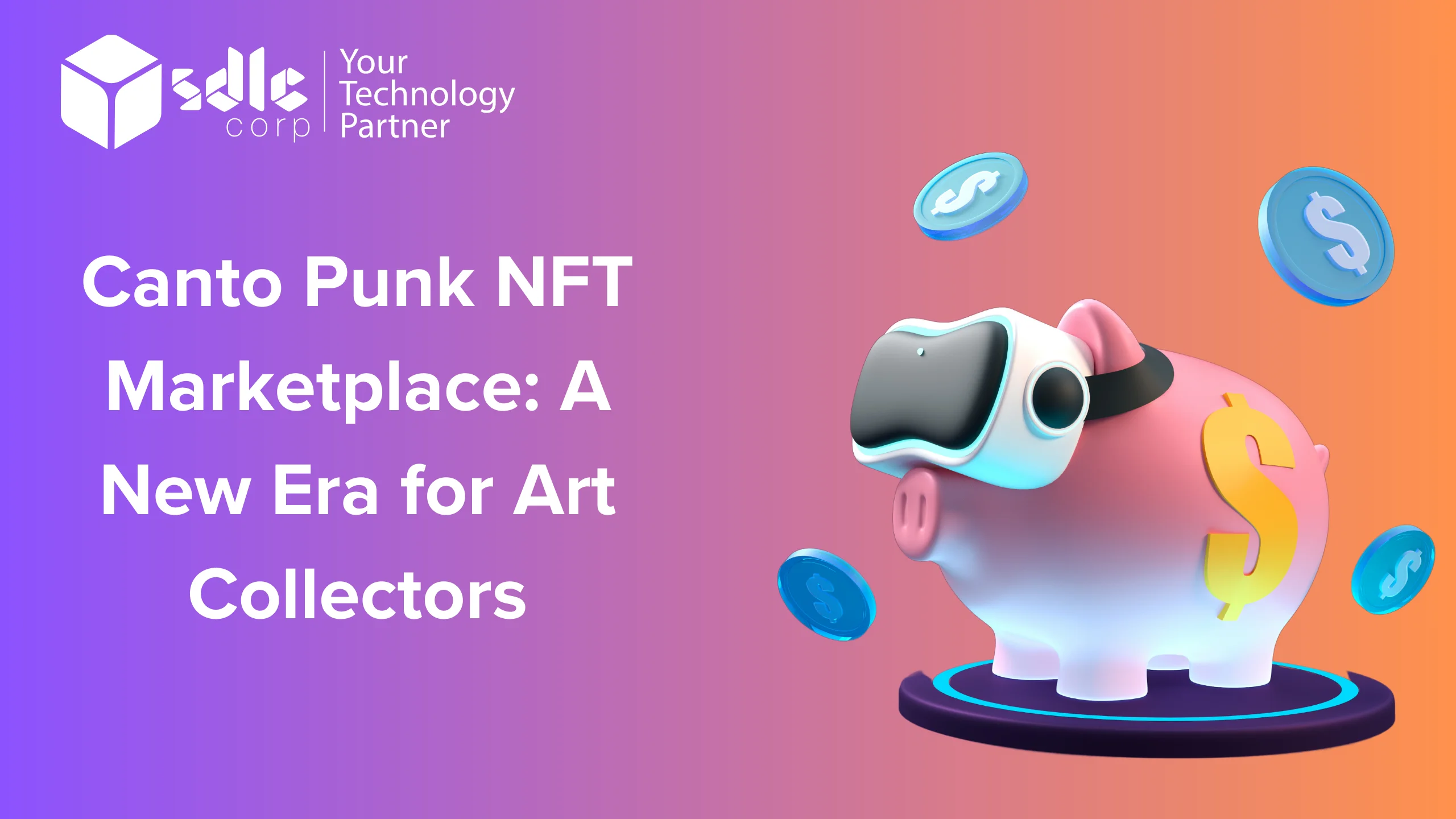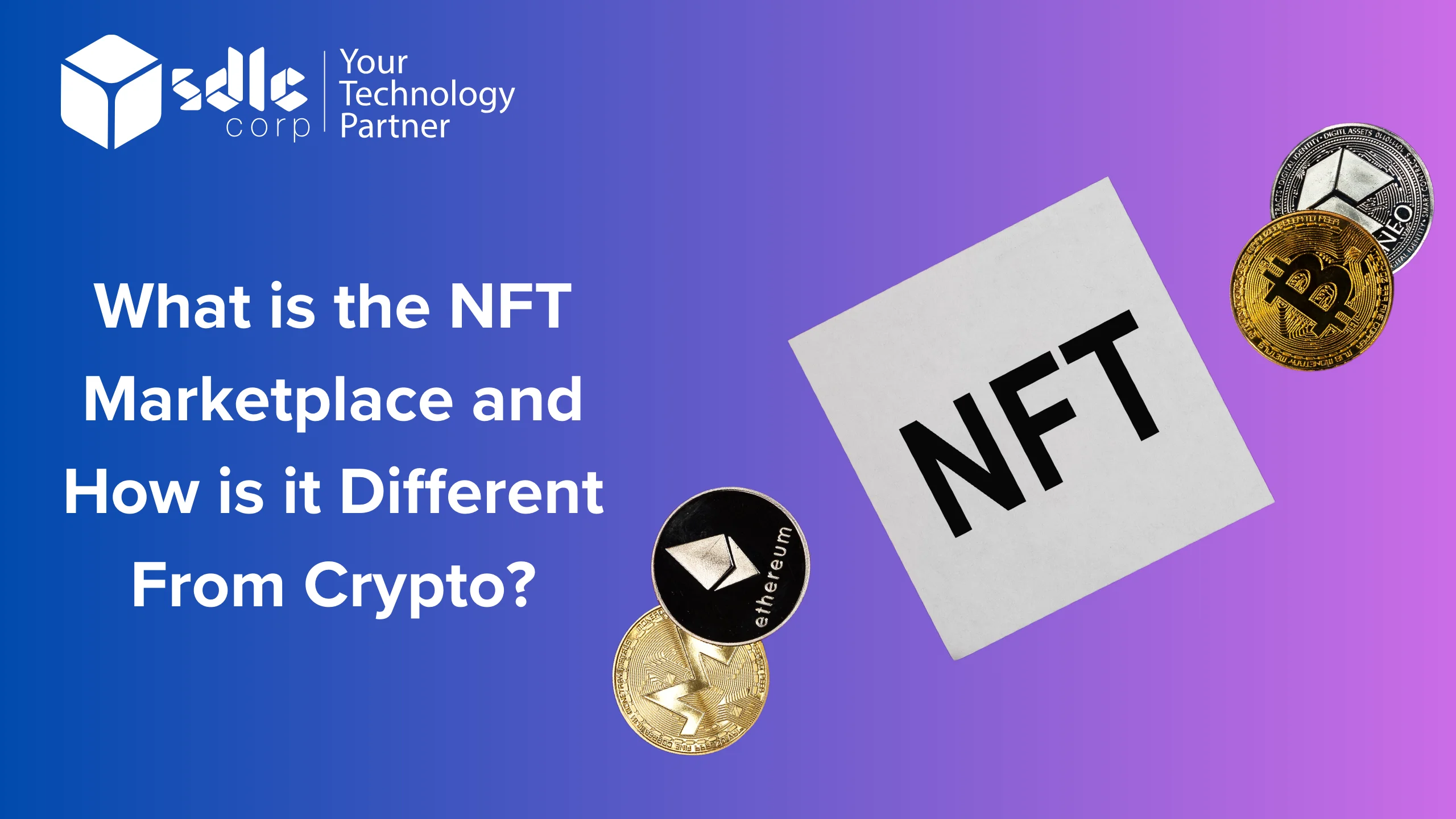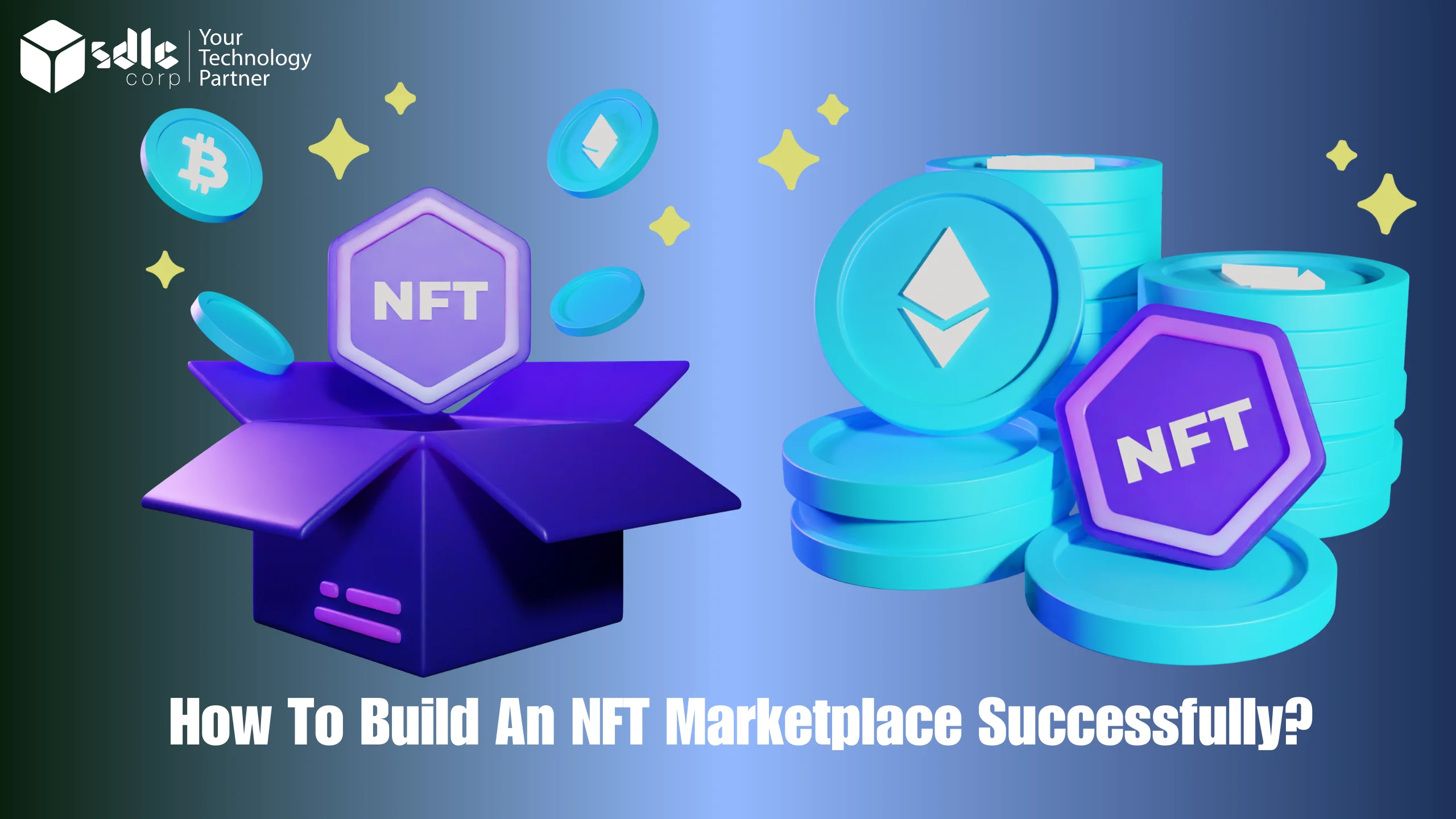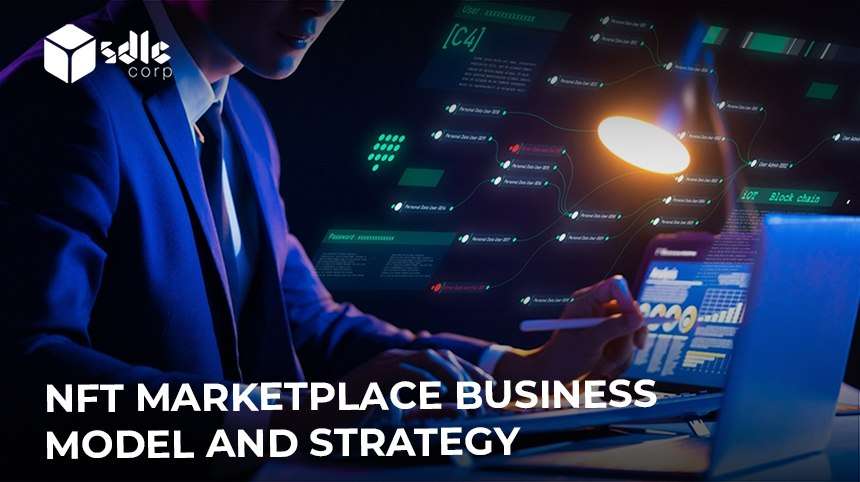Introduction
The NFT marketplace is a digital platform where users can buy, sell, and trade unique digital assets, known as non-fungible tokens (NFTs). Unlike cryptocurrencies, which are interchangeable, NFTs represent ownership of a specific item or content. With NFT marketplace development and NFT development rapidly advancing, these platforms are transforming industries such as art, gaming, and entertainment by offering new ways to monetize digital creations.
What is the NFT Marketplace?
The NFT (Non-Fungible Token) marketplace is a platform that uses blockchain technology to facilitate the buying, selling, and trading of digital assets. NFTs are unique digital tokens representing ownership of media such as images, videos, music, or other content. These tokens are stored on a blockchain network, with smart contracts verifying ownership and ensuring authenticity.
Creators can list their digital works on NFT marketplaces, and buyers can purchase NFTs that signify ownership of that content. Blockchain technology ensures that each NFT remains a distinct, non-replicable asset.
OpenSea, a leading NFT marketplace, allows users to trade digital art, collectibles, and virtual real estate. Rarible, another prominent platform, operates similarly, enabling creators to auction off their digital assets.
In recent years, NFT marketplaces have surged in popularity, driven by growing demand for digital content and the desire for secure, transparent ways to exchange digital assets. NFTs have also become an investment avenue, with some tokens fetching millions.
Launch Your Own NFT Marketplace Today!
Develop a secure, user-friendly NFT marketplace for buying, selling, and trading digital assets with blockchain tech.

How Does the NFT Marketplace Work?
The NFT (Non-Fungible Token) marketplace leverages blockchain technology to enable the buying, selling, and trading of digital assets. NFTs are one-of-a-kind digital tokens that represent ownership of specific media, such as images, videos, music, or other digital content. These tokens are stored on a blockchain network, where smart contracts ensure the verification and authenticity of ownership. For businesses in the crypto space, like a Crypto Game Development Company, NFTs present an innovative way to monetize and secure digital assets.
Creation of NFTs
Creators can make NFTs by putting their digital content, like art, music, or videos, on the blockchain network through platforms like OpenSea, Rarible, or other NFT marketplaces. The blockchain network checks and confirms that the digital content belongs to the owner.
Minting of NFTs
Once the digital content is uploaded, creators can “mine” their NFTs. This means that they are making a unique digital asset that shows they own the original content.
Listing NFTs
After that, creators can put their NFTs up for sale on the NFT market. They can set a starting bid and a minimum price for their NFTs. Buyers who are interested can bid on the NFTs or buy them outright.
Smart Contract Execution
The transaction is carried out using smart contracts, which are agreements that carry out themselves. The terms of the deal between the buyer and seller are written directly into lines of code. Once the NFT is sold, the smart contract makes sure that the sale goes through and that the buyer helds to be the owner of the NFT.
Transfer of Ownership
The buyer acquires ownership of an NFT through the blockchain network, which serves as a public ledger for all transactions. The buyer can transfer, sell, or retain the NFT, with each subsequent transaction recorded on the blockchain.
NFT marketplaces allow creators to sell their digital content globally, enabling buyers to purchase and trade unique digital assets. Blockchain technology ensures the authenticity and verification of NFTs, with all ownership details securely logged on the network. NFTs have also become a popular investment, with some assets fetching millions of dollars.
In essence, NFT marketplaces function by minting unique digital tokens that signify ownership of digital content. These assets are listed for sale, transactions are executed via smart contracts, and ownership is transferred to the buyer, with every step recorded on the blockchain.
What are NFTs?
A type of digital asset known as an NFT (Non-Fungible Token) utilises blockchain technology to authenticate and verify ownership. In simple terms, NFTs are unique digital assets that cannot be exchanged for other assets or tokens on a one-to-one basis, unlike traditional cryptocurrencies such as Bitcoin or Ethereum. Every NFT is unique and has a special worth that is determined by market demand.
A wide variety of digital assets, such as works of art, music, videos, and other types of creative material, can be represented as NFTs. Especially in the art world, where they have been used to sell digital art for millions of dollars, NFTs have grown in popularity over the past few years.
NFTs’ are stored on a blockchain, a decentralised digital ledger that documents all transactions in an open and immutable manner, is one of their key characteristics. In other words, once an NFT is made, its ownership and history cannot be changed, making it impossible to copy or fake. Blockchain platforms like Ethereum, which let creators mint, sell, and trade NFTs, are where NFTs are usually created.
Buyers usually use cryptocurrencies like Ether (ETH) to place bids on or make purchases of NFTs. After making a purchase, the buyer has the option to give the NFT to a third party for cash or to prove possession of a digital asset.
Explore our other insights!

How to Create Your Own NFT Marketplace?
The rise of NFTs (Non-Fungible Tokens) has transformed the way digital assets are bought, sold, and owned. From

Canto Punk NFT Marketplace: A New Era for Art Collectors
Canto Punk NFT Marketplaces: A New Era for Art Collectors In recent years, Non-Fungible Tokens (NFTs) have been

How Can NFT Tickets Disrupt Ticketing?
How can NFT Tickets Disrupt Ticketing Introduction The traditional ticketing industry has long been plagued with issues such
Join the Future of Gaming with Web3 Tech!
Web3 game development leverages blockchain for decentralized gaming, enabling player ownership of assets and NFTs.

Applications of NFTs
NFTs are often used to represent ownership of specific digital assets, such as virtual real estate, music, videos, or artwork. In this section, we’ll explore the diverse applications of NFTs in greater detail.
The art world is where NFTs have found the most prominent use. Creators can sell their digital works as exclusive, one-of-a-kind pieces through NFTs. With Metaverse NFT Game Development and Web3 Game Development advancing, these technologies are enhancing the gaming and virtual worlds by providing verifiable ownership and authenticity via blockchain. While buyers gain the right to display or resell the NFT, they do not own the copyright or a physical version of the artwork, only the digital token representing it.
Music
In the music business, NFTs are also used to symbolise ownership of musical works like albums or specific songs. NFTs that grant supporters access to restricted material, such as meet-and-greets or backstage passes, can be sold by musicians. NFTs can be used to monitor profits and make sure that creators are fairly compensated for their efforts.
Example: Grimes is a popular singer; he sold a selection of digital art works for almost $6 million in March 2021. There were ten pieces in the “WarNymph” collection each had their own original music recording, accompanying visuals, and a brief poem. “Death of the Old,” the item with the greatest sales volume, went for more than $389,000.
The sale of the NFTs not only helped to raise awareness of the expanding trend of NFTs in the art world, but it also enabled Grimes to monetize her digital artwork and music in a new and innovative manner.
Gaming
NFTs are also becoming more and more common in the gaming sector. Blockchain-based video games can produce distinctive in-game items that players can own and exchange, such as armour, weapons, and skins. These things can be expensive because they are frequently uncommon and challenging to find.
Example: Axie Infinity – In a blockchain-based game Axie Infinity, players can gather, breed, and engage in a battle with creatures named Axies. Since every Axie is a distinct NFT with its own collection of qualities and skills, makes them valuable and collectible.
Axies are available for players to purchase and sell on a variety of marketplaces, with some powerful and rare Axies fetching thousands of dollars. Additionally, by engaging in battles and finishing quests, players can gain access to the game’s native token, called “AXS,” which they can then use to buy and sell items on cryptocurrency exchanges.
Collectibles
NFTs can also be used to symbolise ownership of collectibles like toys, trading cards, and other tangible goods. Collectors can purchase, sell, and trade these items more securely and effectively by creating digital representations of them. In the collectibles market, having a means to demonstrate ownership and authenticity is crucial.
Example: Beeple – In March 2021, digital artist Beeple sold a single NFT for a record-breaking $69 million. “Everydays: The First 5000 Days” is a collage made up of 5,000 different pictures that Beeple assembled over the course of 13 years.
The sale of Beeple’s NFT demonstrated the possibility for NFTs to become a new genre of collectible art and represented a significant turning point in the world of NFTs and digital art. The expensive price also brought attention to the rising demand for uncommon and distinctive digital assets as well as the opportunity for creators to make money off of their work using NFTs.
Virtual Real Estate
NFTs can also be utilised to symbolise possession of virtual real estate. NFTs can stand in for ownership of virtual real estate, structures, or other properties in virtual worlds like Decentraland or Somnium Space. A genuine economy can then be created in the virtual world as a result of owners developing and selling their virtual assets to other users.
Example: Decentraland – A virtual universe called Decentraland was created using the Ethereum blockchain. Users can purchase and develop digital land plots in Decentraland that are represented by NFTs dubbed LAND tokens.
Owners of LAND tokens have unrestricted creative freedom over the virtual space and are able to construct anything they want, including virtual residences, companies, installations of art, and even video games. Additionally, they can make cryptocurrency by renting out their virtual property to other users.
Charitable Causes
Last but not least, NFTs can be applied to charity purposes. NFTs can be sold by artists and other creators who then donate some or all of the proceeds to a charitable group. The NFTs can stand in for a special item, such as a work of art or a collectible, that can be sold to generate money for a worthwhile cause.
Boost Your Earnings with NFT Staking Now!
Leading NFT staking platform development company offering secure, scalable, and customizable staking solutions.

NBA Top Shot – A Case Study
NBA Top Shot is a blockchain-based platform made by Dapper Labs that lets basketball fans buy, sell, and trade officially licenced NBA collectibles in the form of Non-Fungible Tokens (NFTs). These NFTs are unique digital assets like video highlights, photos, and audio clips from NBA games.
Background
NBA Top Shot debuted in October 2020, and basketball fans and collectors quickly started buying it. The success of the platform is due to a number of things, such as the growing interest in blockchain technology, the popularity of NBA, and the growing demand for collectibles.
Marketing
NBA Top Shot’s marketing strategy was to make it seem like the NFTs were special and hard to get. Each NFT was unique, which made them more valuable and desirable to collectors. To get people excited, the platform also released new NFTs in small batches that sold out quickly. This made collectors feel like they needed to buy the newest NFTs right away.
User Experience
NBA Top Shot’s user experience is made to be fun and easy to use. The platform has an easy-to-use interface that lets people buy, sell, and trade NFTs. Users can look at the different NFTs on the platform and see information about the player, team, and game for each one. Users can also see how much each NFT is worth right now and keep track of how many of them they have.
The Technology
NBA Top Shot’s user experience is made to be fun and easy to use. The platform has an easy-to-use interface that lets people buy, sell, and trade NFTs. Users can look at the different NFTs on the platform and see information about the player, team, and game for each one. Users can also see how much each NFT is worth right now and keep track of how many of them they have.
Impact
NBA Top Shot has had a big effect on the collectibles market and on blockchain technology. The platform has made a new market for digital collectibles and shown how blockchain technology could be used in the sports and entertainment industries. NBA Top Shot has also brought in a lot of money for the NBA and its partners. In the first six months after it came out, it made over $500 million in sales.
Expansion and Challenges
Since NBA Top Shot has been so successful, it has continued to add more services and partnerships. In March 2021, NBA Top Shot and the Women’s National Basketball Association (WNBA) announced that they would work together to make NFTs with some of the best players in the league. This expansion has made the platform more appealing to a wider audience and shown how blockchain technology could be used in the sports world.
But NBA Top Shot has also had to deal with some problems. People have said that the platform’s transaction fees are too high. In some cases, they have been said to be as high as 15%. Some users have also said that they have had trouble with the platform’s customer service and support, which has made some collectors angry and unhappy.
In response to these problems, NBA Top Shot has changed its fee structure and made its customer service better. The platform has also been open about its problems and asked its users for feedback to figure out how to fix them.
Build Your NFT World, Rule the Game!
Develop immersive Metaverse NFT games with unique assets, player-owned economies, and decentralized experiences.

How is NFT Marketplace Different From Cryptocurrency?
Both cryptocurrencies and NFTs (Non-Fungible Tokens) are digital assets that have surged in popularity recently. However, despite some similarities, they differ in significant ways.
NFTs are unique digital tokens representing ownership of specific items or content, such as art, music, or even tweets. Unlike cryptocurrencies, NFTs cannot be traded one-for-one with other tokens or assets, as each NFT holds a distinct value. This is where Web3 Game Development plays a pivotal role, as it leverages NFTs to introduce ownership and trading of in-game assets, creating unique opportunities for players.
Cryptocurrencies like Bitcoin and Ethereum, on the other hand, are fungible assets. They can be traded one-for-one with other tokens or assets—one Bitcoin is always equal to another Bitcoin, and the same applies to Ethereum. The value of cryptocurrencies is driven by supply and demand within the market.
Several key differences set the NFT marketplace apart from the cryptocurrency market. First, the NFT market centers on collectibles, art, and other unique digital assets, while the cryptocurrency market is broader, focusing on investments and payments. For developers in fields like NFT Staking Platform Development, NFTs offer distinct benefits that can enhance the gaming and entertainment sectors by providing verifiable ownership of unique in-game items.
Second, while the value of cryptocurrencies is determined by market supply and demand, NFT value is influenced by its uniqueness, popularity, and perceived worth. NFTs are thus subject to more volatile and subjective pricing compared to cryptocurrencies.
Third, the technology behind NFTs differs from that of cryptocurrencies. While cryptocurrencies are built on blockchain technology, NFTs are typically developed on blockchain platforms that support smart contracts, such as Ethereum. Smart contracts allow for the creation and verification of unique digital assets, ensuring they remain secure and resistant to duplication or manipulation.
Lastly, while both markets utilize digital wallets for storage and transactions, the wallets used for NFTs often come with specialized features designed to support specific types of assets. In Web3 Game Development, these wallets are crucial for enabling players to manage their NFT-based in-game items and engage with staking platforms tailored for unique digital assets.
Conclusion
In conclusion, while both NFTs and cryptocurrencies are digital assets, the NFT marketplace is distinct due to its focus on unique digital items like art, music, and collectibles, verified through blockchain technology. NFT Marketplace Development and NFT Development offer innovative ways for creators and businesses to monetize digital content. Furthermore, with the rise of Web3 Game Development Services, NFTs are increasingly being used to represent ownership and value in virtual worlds, transforming the gaming and entertainment industries.
How SDLC CORP Can Help with
NFT Marketplace?
SDLC CORP provides comprehensive solutions for NFT Marketplace Development and NFT Development, enabling businesses to launch secure and efficient platforms for trading digital assets. Their expertise in Web3 Game Development Services helps integrate NFTs into gaming environments, unlocking new opportunities for players. As a leading Crypto Game Development Company, SDLC CORP specializes in creating immersive, tokenized experiences. With advanced Metaverse NFT Game Development and NFT Staking Platform Development Company services, they offer tailored solutions to enhance digital ownership, player engagement, and staking mechanisms in the evolving Web3 ecosystem.
FAQs
1. What is NFT marketplace?
An NFT marketplace is a place where people can buy, sell, and trade tokens that can’t be used for anything else (NFTs). NFTs are one-of-a-kind digital assets that are verified on a blockchain. This makes it safe to own and transfer these assets.
2. How is an NFT marketplace different from a cryptocurrency exchange?
Even though both involve digital assets, an NFT marketplace focuses on buying and selling unique, verifiable digital assets, while a cryptocurrency exchange helps people buy and sell fungible cryptocurrencies like Bitcoin or Ethereum.
3. Can I buy NFTs using traditional currency?
Most NFT marketplaces let users buy NFTs with both traditional money like USD or EUR and cryptocurrencies. But each platform may have a different list of ways to pay.
4. What kinds of assets can be turned into NFTs?
Almost any digital asset, like art, music, video content, or virtual land, can be turned into an NFT. The only rule is that the asset has to be unique and able to be checked on a blockchain.
5. Are NFTs a good investment?
Yes, NFT is indeed a very good investment. As with any investment, there is no guarantee of a return, and the value of NFTs can change based on factors like demand, scarcity, and cultural relevance. Before you invest in NFTs, you should do your research and learn about the risks.














